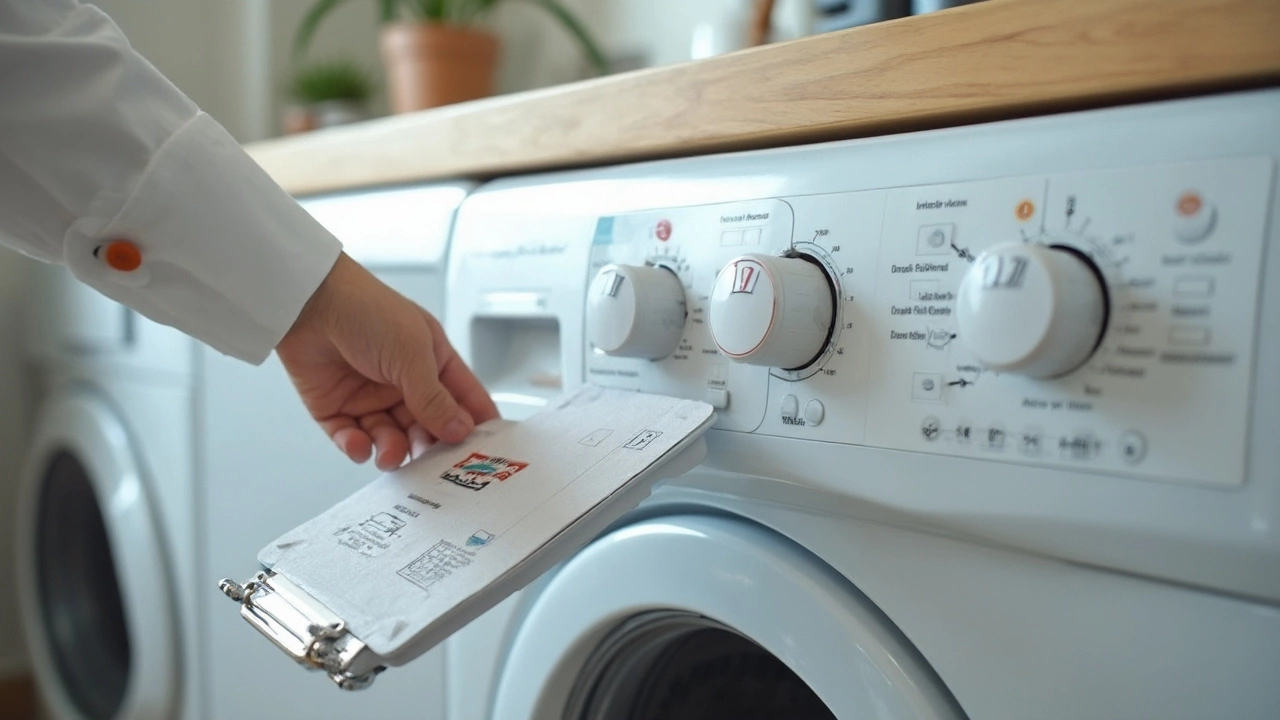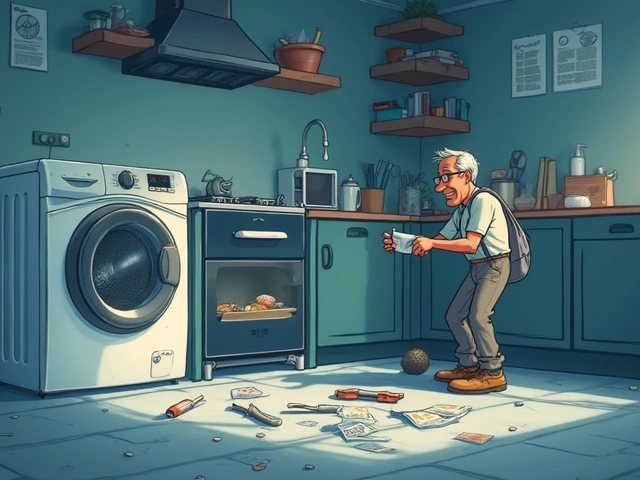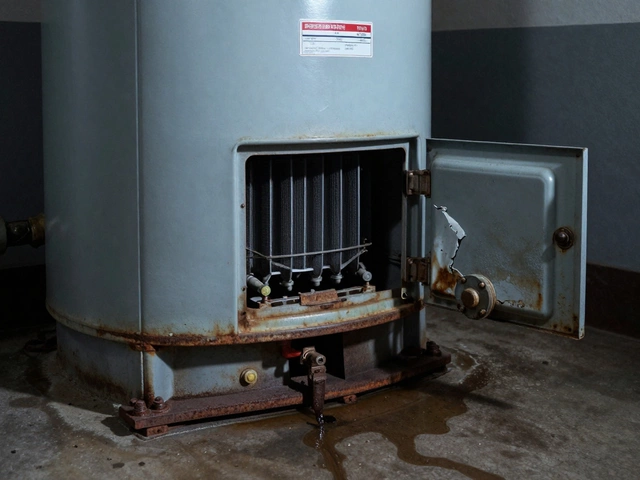If you search "which washer brand breaks least," you’ll drown in opinions. Here’s a fact: not all brands are created equal, and some churn out dryers more often than clean socks. Let's skip the fluff and look at real numbers and hands-on experience, not just flashy ads or wild online arguments.
According to recent repair reports, brands like Speed Queen, LG, and Whirlpool tend to see way fewer calls to the repair shop. Service techs I've talked to always nod at Speed Queen first—these things are almost overbuilt, and parts are easy to swap. LG's front-loaders, especially models made after 2020, rarely show up in repair logs unless someone’s shoved way too many towels inside. Whirlpool gets points for being simple and cheap to fix when things do break.
Want to avoid dealing with a busted washer two months after the warranty dies? It pays to know what actually breaks: control panels on fancy touchscreens, plastic drain pumps, and those mystery leaks that only show up during spin cycle marathons. A simple control dial or a good old-fashioned agitator might mean fewer headaches—and less money handed over to guys like me.
- What the Data Says: Washer Brands Ranked
- Common Washer Issues and Why They Happen
- How to Spot a Reliable Washing Machine
- Simple Maintenance Tips to Avoid Repairs
What the Data Says: Washer Brands Ranked
If you're hunting for the best washer brand, you probably want real-world proof—not marketing promises. Let’s look at how the most popular brands actually stack up when it comes to real repair rates and owner headaches. Consumer Reports, Yale Appliance, and even appliance techs on the job all seem to point at the same line-up.
| Brand | Service Rate (First 5 Years) | Noteworthy Details |
|---|---|---|
| Speed Queen | ~5% | Super tough. Used in laundromats. Old-school design, easy fixes. |
| LG | ~6-7% | Quiet, smooth front-loaders. Fewer leaks and weird breakdowns. |
| Whirlpool | ~8-10% | Parts easily available, cheaper repairs. Many basic models last longer. |
| Samsung | ~11-13% | Cool features but more electronics—higher repair calls for stuff like sensors. |
| GE | ~13-15% | Solid, but more control board failures. Top-loaders do better than front. |
Basically, Speed Queen is the tank of the industry. If you've got the budget and don't care about fancy smart features, this is as reliable as it gets. LG’s numbers keep improving, especially after 2020 when they overhauled some longstanding issues. Whirlpool is the safe middle ground—their basic machines outlast the fancy ones.
Before you buy, remember this: the bigger the touchscreen and the more settings you’ll never use, the higher the chance for expensive repairs down the road. Basic models break much less. That’s straight from the mouth of repair pros who’d love to charge you for every circuit board swap.
- If reliability is your top dealbreaker, pick from Speed Queen or LG’s simpler models.
- If you're budget-first but want decent odds, Whirlpool's old-school top-loaders are a safe bet.
- Avoid too many bells and whistles unless you really love calling for service.
Common Washer Issues and Why They Happen
Let’s face it—there’s a pretty short list of washer headaches that most folks bump into. Understanding why these things break can actually help you dodge most of the hassle. Here’s a look at what usually goes wrong, and how some brands avoid those common slip-ups.
The number one culprit? Failed door locks and latches, especially in front-loaders. Once that sensor or latch gives up, your washer just won’t budge, and you’re stuck looking at wet laundry. LG and Speed Queen washers rate much better here because their designs are simpler and hold up to constant opening and closing.
Next on the list are water pump failures and mystery leaks. Pumps get clogged fast if you don’t clean out pocket junk or pet hair. Whirlpool and Maytag models usually have pumps that are easy to reach and swap. Leaks are often from hoses cracking or seals drying out, usually after a few years. Good news: the rubber on Speed Queen washers lasts noticeably longer, according to repair techs.
Don’t forget control board failures. Modern washers love their fancy screens and touch panels, but the more digital pieces you add, the more stuff can break. Basic dial machines from Whirlpool or Speed Queen nearly always outlast touchpads from some fancy European brands, simply because there are fewer things to go wrong.
- best washer brand models use proven, simple tech—less to break, more likely to last.
- Overloading is an easy way to fry a washer motor, snap a drive belt, or crack a suspension.
- Skipping the washer’s cleaning cycle means more buildup, which clogs components and absolutely stinks.
Spent some time combing through recent data, and here’s what the numbers show for the most common issues by repair rate (pulled from a well-known appliance insurer’s 2024 report):
| Issue | Approx. % of Repairs | What Causes It |
|---|---|---|
| Door/Lid Problems | 27% | Latch wear, sticky sensors |
| Water Pump/Drain Failures | 22% | Clogs, worn-out pump |
| Control Board Failure | 18% | Power surges, moisture, poor quality |
| Leaks | 16% | Cracked hoses, dry seals |
| Agitator/Drum Issues | 7% | Overloading, bad bearings |
| Other | 10% | Misc. electrical or mechanical |
Long story short: If you want less repair drama, go for a model that skips “smart” extras and just does the basics well. The proven stuff rarely bites you later.

How to Spot a Reliable Washing Machine
It’s easy to get distracted by shiny features like Bluetooth or see-through doors, but none of that matters if your washer can’t make it through a year without a meltdown. If you’re hunting for the best washer brand with minimal repair drama, look for these concrete things—not marketing hype.
- Metal Parts Over Plastic: Check under the lid and at the drain pump. Metal is tougher and lasts way longer than plastic, especially in busy households.
- Simple Controls: Dials and mechanical buttons are actually less likely to break than fancy digital touchscreens. If you just want your clothes clean, keep it old-school.
- Warranty Length: If a brand throws in a 5- or 7-year warranty on the motor or drum, they’re not afraid to back up their machine. Shorter warranty? That’s a red flag.
- Accessible Service: Make sure parts and service are available locally. Some European brands look cool but are a nightmare to fix in North America if something goes wrong.
- Owner Reviews—Look for Patterns, Not Stars: Skip the five-star hype and see if lots of people mention things like "failed bearings" or "control board replaced twice." That’s evidence, not just opinion.
Here’s a quick table breaking down popular washer brands and what you’re likely to run into based on repair stats from a 2024 Consumer Reports survey and data from repair techs:
| Brand | Common Issues | Average Service Life (years) | Warranty |
|---|---|---|---|
| Speed Queen | Very few, mostly cosmetic | 15+ | 3-5 year standard |
| LG | Drain pumps, molding on seals with lots of use | 10-12 | 10 years on motor |
| Whirlpool | Lid locks, some control board hiccups | 11-14 | 1 year standard |
| Samsung | Electronics, vibration on older models | 8-10 | 1-3 years |
| GE | Noisy bearings, water valves | 9-12 | 1 year standard |
Avoid buying based only on price. Cheap washers often cut corners on key parts—the inside looks fine now, but repairs down the road cost more than the savings. If you can, visit a local appliance shop and poke around inside a demo machine. You’ll spot the difference right away: heavier, sturdy parts and a solid feel are big clues you’re looking at something built to last.
Simple Maintenance Tips to Avoid Repairs
Even if you land the best washer brand, it’s not indestructible. A lot of folks think washers run forever without any help, and then wonder why they’re calling a repair guy after a few years. The truth is, a little care goes a long way toward beating those annoying breakdowns and surprise leaks.
If you want your washing machine to keep working (and smelling fresh), focus on these basics:
- Don’t overload. Cramming that drum full sounds tempting, but it strains the motor, wears out the suspension, and chews up belts way faster. Stick to what the manual says.
- Use the right detergent, and watch the amount. HE washers really hate regular soap. Too many suds can trigger errors, wreck the pump, and cause leaks. Mark the lines on a cup or bottle and don’t guess.
- Leave the door open after washing. This dries out the drum and stops funky smells or mold buildup inside.
- Check the hoses every few months. Look for cracks, bulges, or leaks where the hose hooks up. Replace every 5 years, even if they look fine—rubber ages, and a burst hose can flood your place in minutes.
- Clean out the filter and dispenser trays. Gunk builds up and blocks drains or makes the soap clump. Most manuals show exactly where these are, even for front-loaders.
- Run a tub clean cycle. Once a month is ideal; if your machine doesn’t have a button for it, run a hot wash (no clothes) with a washer cleaner or a cup of white vinegar.
Here’s a quick cheat sheet for how often you should stay on top of these chores:
| Task | How Often |
|---|---|
| Inspect hoses and connections | Every 3 months |
| Clean filter and dispensers | Monthly |
| Run tub clean cycle | Monthly |
| Check for leaks under machine | Monthly |
| Replace hoses | Every 5 years |
Avoiding repairs isn’t about being a clean freak—it’s about knocking out simple stuff before it turns into a $200 service call. Most washers break down from a mix of hard water gunk, leftover lint, or being stuffed too full week after week. Slowing down just a bit now saves money and headaches later.





